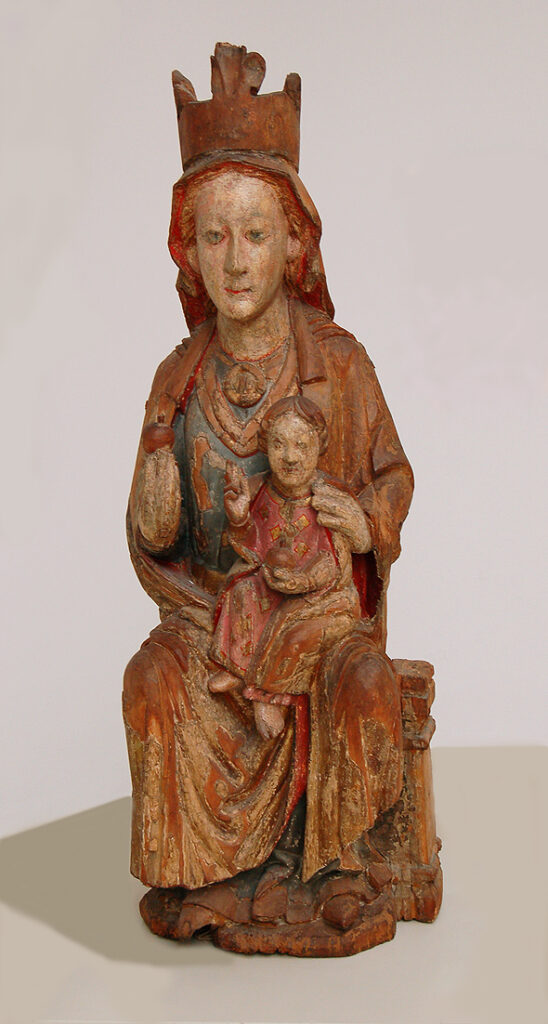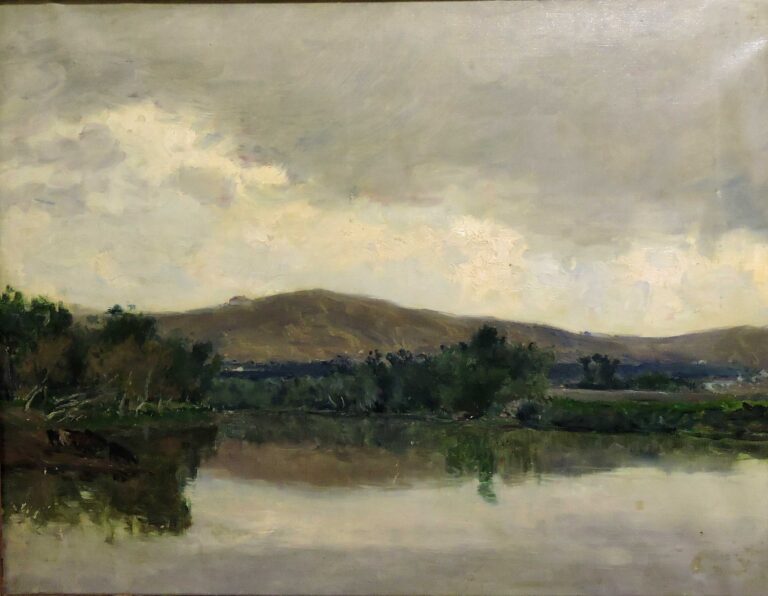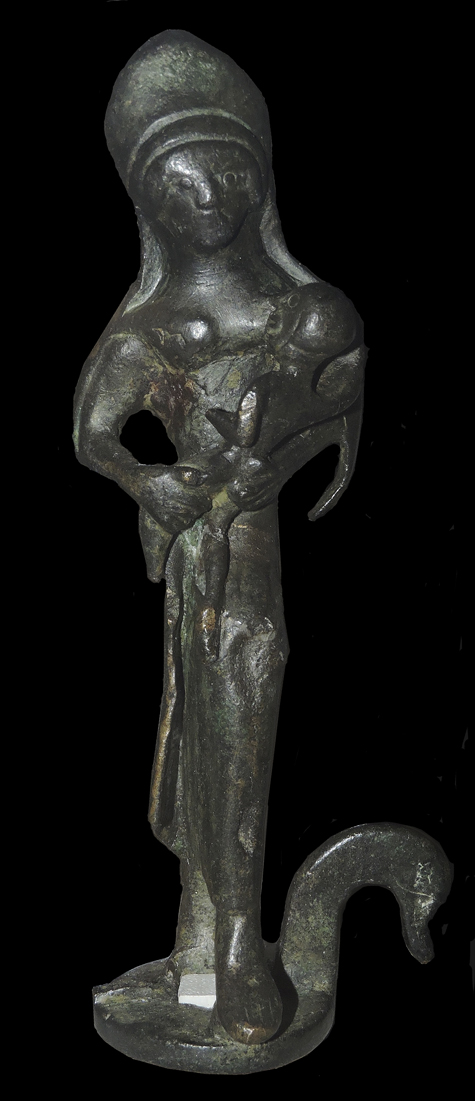Virgin with child #7
This Virgin and Child, seated, was restored by Barbara Hasbach in 1990. Its typology responds to a constant of Gothic art, with roots in the Romanesque. In addition, a series of unchanging elements survive in it throughout the Middle Ages, although the style evolved. The Child, placed frontally on Mary’s lap, wears a thalar saya with parallel folds, partially covered by the mantle. He blesses with his right hand while resting on his left knee the closed book on the cover of which three lines read: ihs, in small Latin characters, xps, in Greek and underneath A (alpha) and O (omega), direct reference to Christ as total Wisdom, beginning and end, synthesis of the Johannine text of the great phylactery carried by the Child of the splendid Irache ejamplar, which after the Christmas antiphon, says: Ego sum alpha et omega, primus et novissimus dominus. This, together with the sibolism of the material, gives the work a metaphysical, divine character, which transcends the earthly reality to inscribe itself in an ultraterrestrial environment, where the brightness and luminosity of the silver lends the work the timeless continent that characterizes this type of sacred images. The disposition of the personages responds to the type of Virgin as “throne of Wisdom”, which is Christ. Although the type is analyzed in wood, it can justifiably be extrapolated to a noble material such as silver. The examples are numerous in Romanesque art and survive during the first Gothic art, in which the humanization of the characters begins, as is evident in the Toledan example, which can be framed in the art of 1200, with ostensible Byzantine influence. Both characters have wooden faces and hands repainted in later times, like the crown worn by the Child, a thick cylindrical arch, which closely imitates the crown of the Virgin. / Extracted from: Angela Franco Mata: “Una Virgen entronizada con Niño, gótica, de posible origen leonés, en el Instituto Gómez Moreno, de Granada”, in De Arte, 7, 2008, pp. 77-92.




